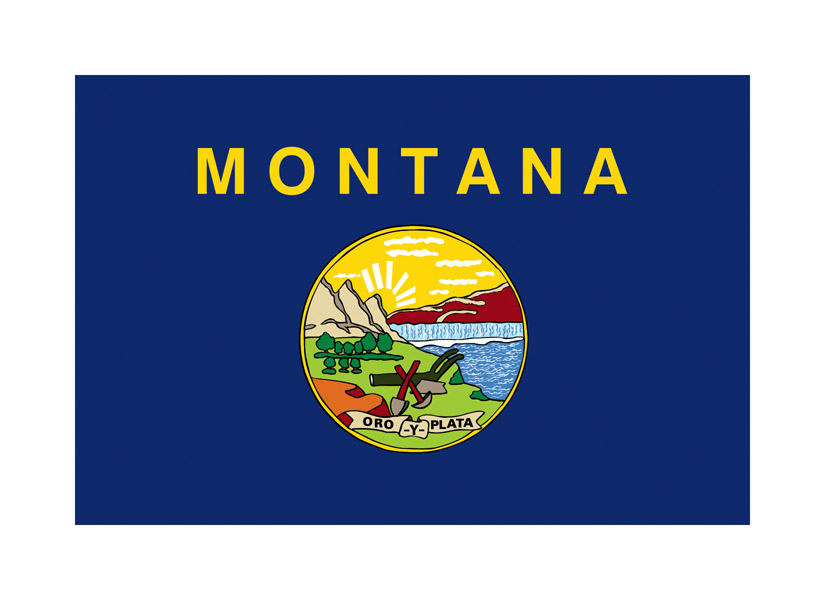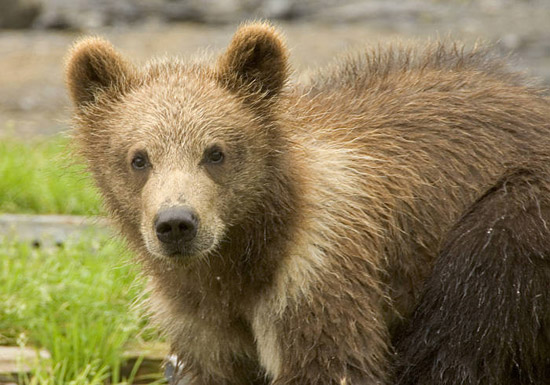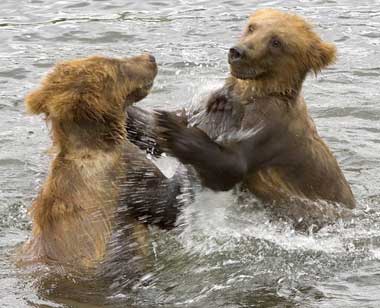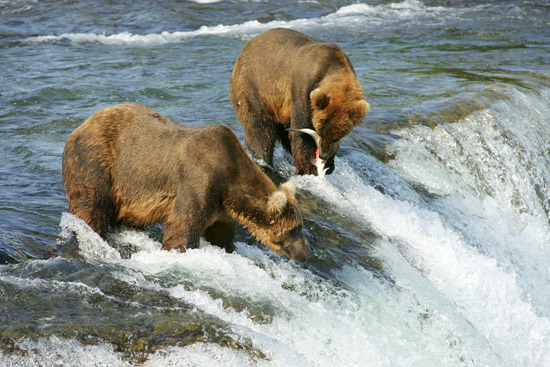Grizzly Bear (common name)
Ursus arctos horribilis (scientific name)
Overview
The grizzly bear is a very large brown bear found only in alpine wilderness areas of the western US and Canada. It is the second largest of the world’s terrestrial carnivores. Threatened in the US, Montana is only one of five states with resident populations and is home to an estimated 600 grizzlies. In Montana, where the bear was designated the official state animal in 1953, it can be found in the northwest Montana Rockies, around Yellowstone National Park, and the Cabinet-Yaak area of western Montana. The grizzly bear also is California's state mammal.
Close-up
Status
Official state land mammal
Also Known As
Silvertip bear
Physical Details
Grizzly bears are generally larger and more heavily built than other bears. They can be distinguished from black bears, which also occur in the lower 48 states, by their longer, curved claws, humped shoulders, and a face that appears to be concave in profile. Grizzlies may be pale (almost luminous blond to reddish-blond to light brown) to darker brown to even black.
|
|
Males |
Females |
|
Size |
3.28 ft (1 m) at the shoulder and may stand 6.5 ft (2 m) |
3.28 ft (1 m) at the shoulder and may stand 6.5 ft (2 m) |
|
Weight |
400-770 pounds (180 kg-350 kg) |
250-350 pounds (114-160 kg) |
Lifespan
25 years
Habitat
Range: From Alaska south through much of western Canada, and into portions of the northwestern United States, extending as far south as Yellowstone and Grand Teton National Parks.
Conservation: Vulnerable (VU)
Behavior
Grizzly bears very rarely exhibit predatory behavior toward humans. However, a bear that has been exposed to human food or garbage may become dangerous and aggressive to people. A solitary animal, a male's home range may be as large as 1,118.5 square miles (1,800 sq km). A female grizzly is extremely protective of her offspring and will attack if she thinks she or her cubs are threatened.
Top land speed recorded: 30 mph (48 kph)
Diet
Roots, tubers, grasses, berries, and other vegetation; small rodents, fish, carrion, and even garbage and human food if it is easily available.
Offspring
Breeding interval: 3–4 years
Birthing period: January–February
Average litter size: 2 cubs
Cub size at birth: 14.1 oz (400 g), measuring less than 8.9 in (22.5 cm)
Trivia
- Formerly, taxonomists listed brown and grizzly bears as separate species. Now, brown and grizzly bears are classified as the same species, Ursus arctos. The term "brown bear" is commonly used to refer to the members of this species found in coastal areas where salmon is the primary food source. Brown bears found inland and in northern habitats are often called "grizzlies."
- In 1981, the US Fish and Wildlife Service hired a grizzly bear recovery coordinator to direct recovery efforts and to coordinate all agency efforts on research and management of grizzly bears in the lower 48 States. Recovery of the grizzly bear covers four states and two US Fish and Wildlife Service regions.
- The common name grizzly is derived from the term "grizzled," which refers to hair that is either flecked with gray at the ends or is a mixture of gray and darker colors. It is from this "grizzled" nature of the coat that the title "silvertip" is also applied to the grizzly bear.
| Classification | |
|---|---|
| Kingdom: | Animalia |
| Phylum: | Chordata |
| Class: | Mammalia |
| Order: | Carnivora |
| Family: | Ursidae |
| Genus: | Ursus |
| Species: | U. arctos |
| Subspecies: | U. a. horribilis |
Copyright © 1993-2025 World Trade Press. All rights reserved.






